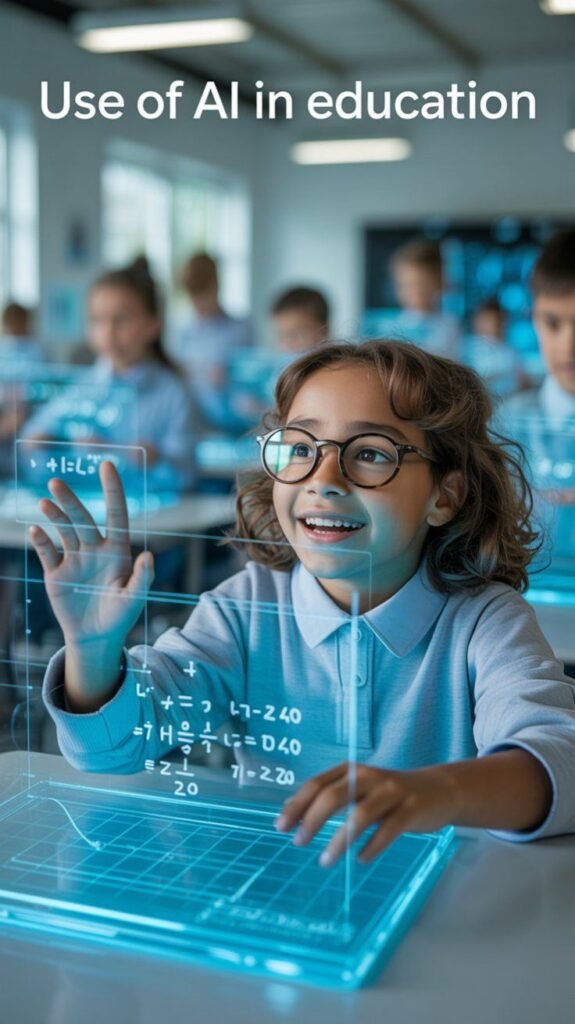Introduction
The landscape of Transforming Education has undergone a profound Transforming Education over the past decade, and in 2025, e-learning has emerged as a central pillar of modern education. No longer confined to niche courses or corporate training, digital learning now spans from K-12 classrooms to higher Transforming Education , vocational training, and professional development. E-learning combines accessibility, personalization, and flexibility, reshaping the traditional boundaries of teaching and learning.
This evolution is driven by rapid advancements in technology, pedagogy, and connectivity, making Transforming Education more inclusive, engaging, and effective. Students no longer need to be physically present in a classroom to access quality instruction, and educators can leverage innovative tools to enhance engagement and learning outcomes. Furthermore, the COVID-19 pandemic accelerated the adoption of online education globally, setting the stage for e-learning to become an integral component of lifelong learning.
In 2025, the digital classroom goes beyond video lectures and PDFs. It encompasses interactive simulations, AI-driven assessments, gamified learning, and collaborative platforms that foster peer-to-peer interaction across continents. These tools not only make learning more enjoyable but also ensure that Transforming Education adapts to the needs, pace, and style of each individual learner.
This article explores 10 ways e-learning is transforming Transforming Education , highlighting how technology, innovation, and accessibility are revolutionizing the way knowledge is shared and acquired. From personalized learning experiences to data-driven insights, e-learning empowers learners and educators alike, creating opportunities that were once unimaginable. Whether you are a student, teacher, or institution, understanding these transformations is essential for navigating the digital classroom of today and tomorrow.

1. Personalized Learning Experiences
One of the most significant advantages of e-learning is the ability to provide personalized learning experiences. Unlike traditional classrooms, where instruction often follows a one-size-fits-all model, digital platforms can adapt content to individual learning styles, abilities, and progress. This personalization ensures that learners are neither left behind nor held back by the pace of the class.
Advanced e-learning platforms use artificial intelligence (AI) and machine learning to analyze a student’s performance in real-time. By identifying strengths, weaknesses, and knowledge gaps, these systems can deliver customized lessons, quizzes, and practice exercises tailored to each learner. For example, if a student struggles with a particular math concept, the platform can provide additional practice problems, explanatory videos, or interactive simulations targeting that skill.
The benefits of personalized learning extend beyond K-12 classrooms. Higher Transforming Education institutions use adaptive learning platforms to help students navigate complex subjects, while corporate training programs employ AI-driven modules to ensure employees acquire the right skills efficiently. Personalized learning also boosts student engagement and motivation, as learners are more likely to stay invested when content aligns with their interests and abilities.
Ultimately, personalized e-learning experiences empower students to take control of their education, learning at their own pace and according to their unique needs. This approach not only improves knowledge retention but also builds confidence, fostering a more inclusive and effective Transforming Education environment.
2. Global Accessibility and Inclusivity
E-learning has broken down geographical and socio-economic barriers, making Transforming Education more accessible and inclusive than ever before. Students from remote villages, underserved communities, or developing countries can now access world-class instruction with just an internet connection. This democratization of learning ensures that quality Transforming Education is not limited by location, income, or social status.
Digital platforms support multiple languages, subtitles, and even adaptive interfaces for learners with disabilities. Features like screen readers, voice commands, and adjustable text sizes make e-learning accessible to students with visual, auditory, or cognitive impairments. Additionally, scholarships, free courses, and open-access learning platforms expand opportunities for learners who might otherwise be excluded from traditional Transforming Education institutions.
Global accessibility also promotes cultural exchange and collaboration. Students from different countries can work together on projects, participate in discussion forums, and gain exposure to diverse perspectives. This fosters empathy, cross-cultural understanding, and a global mindset—skills increasingly valuable in the interconnected world of 2025.
By providing Transforming Education to anyone, anywhere, e-learning levels the playing field, enabling millions of learners to pursue knowledge, skills, and opportunities that were previously out of reach. Inclusivity is no longer just a goal—it is a defining feature of modern digital Transforming Education , ensuring that learning truly belongs to everyone.
3. Interactive and Engaging Content
In 2025, e-learning goes far beyond static textbooks and passive video lectures. One of the most powerful aspects of digital Transforming Educationis its ability to deliver interactive and engaging content that keeps learners motivated and involved. Multimedia elements such as videos, animations, simulations, and gamified modules transform learning from a passive experience into an active, participatory process.
Gamification—integrating game-like features such as points, badges, and leaderboards—encourages students to complete tasks, challenge themselves, and track progress in a fun, rewarding way. Virtual labs allow science students to conduct experiments safely from home, while interactive simulations in fields like engineering, economics, or medicine provide hands-on learning experiences that were once only possible in physical labs.
Interactive content also supports visual, auditory, and kinesthetic learning styles, making Transforming Educationmore adaptable to individual preferences. For instance, students who struggle with textual explanations can benefit from animations or virtual scenarios that illustrate concepts in a more intuitive manner. Platforms such as Coursera, Khan Academy, and Labster exemplify this trend, offering immersive experiences that enhance understanding and retention.
Furthermore, engaging content improves student motivation and focus, reducing dropout rates and increasing completion rates for online courses. By making learning fun, accessible, and participatory, digital classrooms foster a sense of curiosity and enthusiasm, which is critical for lifelong learning in a rapidly changing world.

4. Flexibility and Self-Paced Learning
Another major advantage of e-learning is flexibility. Unlike traditional classroom settings with fixed schedules, digital platforms allow learners to study at their own pace and on their own timetable. This flexibility is particularly beneficial for students balancing school with work, family responsibilities, or other commitments.
Self-paced learning enables students to spend more time on challenging topics while moving quickly through material they already understand. This individualized approach ensures that learners gain mastery of subjects rather than simply keeping up with a group. Adult learners, working professionals, and lifelong learners especially benefit from self-paced modules, which allow them to upskill or reskill without disrupting their careers.
Flexibility also extends to accessing content anytime, anywhere. Mobile apps, downloadable materials, and cloud-based platforms make it possible for students to learn on the go, whether commuting, traveling, or during short breaks. This convenience encourages consistent engagement and allows learners to integrate Transforming Educationseamlessly into their daily lives.
Moreover, flexibility empowers learners to take ownership of their Transforming Education, fostering independence, responsibility, and self-motivation. By accommodating different learning speeds and schedules, e-learning ensures that Transforming Educationis more inclusive, adaptable, and effective for a wide range of students.
5. Collaborative Learning and Social Interaction
While e-learning offers individual flexibility, it also fosters collaboration and social interaction among learners worldwide. Modern digital classrooms feature discussion forums, group projects, video conferencing, and peer-to-peer feedback systems that mimic the dynamics of traditional classrooms, while adding the advantage of global connectivity.
Collaborative learning encourages students to share ideas, debate concepts, and co-create solutions, enhancing critical thinking and problem-solving skills. Virtual breakout rooms, shared digital whiteboards, and interactive platforms such as Zoom, Microsoft Teams, and Google Classroom facilitate group work and discussion, ensuring that students remain socially engaged and academically motivated.
Social interaction in e-learning also builds global networks. Students from different countries, cultures, and disciplines can collaborate on assignments, exchange perspectives, and develop cross-cultural communication skills. These interactions prepare learners for a globally connected workforce, emphasizing teamwork, empathy, and cultural awareness.
By blending flexibility with collaborative opportunities, e-learning ensures that students do not lose the benefits of social learning, making Transforming Educationboth interactive and community-oriented. Collaborative tools also help teachers monitor participation, encourage engagement, and create a more inclusive digital learning environment.
6. Cost-Effective Education
One of the most transformative aspects of e-learning is its affordability and accessibility. Digital Transforming Educationreduces costs associated with traditional learning, such as commuting, campus facilities, textbooks, and printed materials. Many high-quality e-learning platforms offer free or low-cost courses, making education accessible to students from diverse economic backgrounds.
Universities and corporate training programs leverage e-learning to deliver content efficiently, minimizing overhead expenses while reaching a broader audience. MOOCs (Massive Open Online Courses), online certifications, and free learning platforms such as edX, Coursera, and Khan Academy allow learners to acquire knowledge without financial burden.
Cost-effectiveness also extends to time management. Students save time by avoiding long commutes, allowing them to dedicate more hours to studying, skill development, or personal commitments. This efficiency makes Transforming Educationmore equitable, ensuring that financial constraints do not limit opportunities for growth and advancement.
Moreover, cost-effective digital learning supports lifelong learning initiatives, as individuals can continuously upskill or reskill without incurring prohibitive costs. By combining affordability with quality, e-learning democratizes Transforming Educationand ensures that learning remains accessible, practical, and sustainable in 2025 and beyond.
7. Real-Time Feedback and Assessment
E-learning platforms in 2025 provide instant feedback and assessment tools, transforming the way students learn and educators teach. Unlike traditional classrooms where feedback may take days or weeks, digital systems can analyze performance immediately, allowing learners to identify strengths and weaknesses on the spot.
Automated quizzes, AI-powered grading, and interactive exercises enable real-time evaluation of understanding. Platforms can adapt content dynamically, offering additional practice or alternative explanations if a student struggles with a particular concept. This continuous feedback loop not only improves comprehension but also enhances retention and learning outcomes.
For educators, real-time assessments offer actionable insights into student progress, participation, and engagement. Teachers can identify trends, tailor instruction, and provide targeted support to learners who need it most. In professional or corporate settings, real-time evaluations ensure that trainees meet skill requirements efficiently, making the learning process both effective and accountable.
By integrating feedback directly into the learning experience, e-learning platforms empower students to take control of their Transforming Education, promoting self-awareness, responsibility, and continuous improvement. This approach ensures that learning is personalized, measurable, and impactful, bridging gaps that traditional assessments often overlook.
8. Integration of Emerging Technologies
Emerging technologies such as Artificial Intelligence (AI), Augmented Reality (AR), Virtual Reality (VR), and gamification are transforming e-learning into immersive and highly interactive experiences. These innovations allow students to engage with content in ways that were previously impossible, making learning more effective and enjoyable.
AI tutors and chatbots provide personalized guidance, answering questions, recommending resources, and tracking progress. AR and VR create immersive simulations, enabling learners to explore complex concepts in virtual laboratories, historical reconstructions, or medical procedures, without leaving home. Gamification incorporates game elements like points, leaderboards, and challenges, encouraging motivation, engagement, and healthy competition.
Emerging technologies also enhance accessibility, supporting learners with disabilities through speech recognition, text-to-speech, and adaptive interfaces. Data-driven insights powered by AI help educators optimize curricula, track performance trends, and predict learning outcomes, ensuring that Transforming Educationis both efficient and responsive.
By integrating cutting-edge technologies, e-learning blurs the line between traditional and digital Transforming Education, creating environments that are immersive, interactive, and personalized. These tools not only improve learning outcomes but also prepare students for a technology-driven future, equipping them with skills essential for the modern world.

9. Lifelong Learning and Professional Development
E-learning in 2025 has made lifelong learning accessible to everyone, enabling individuals to continuously acquire new skills, stay updated with industry trends, and remain competitive in the modern workforce. Unlike traditional Transforming Education, which is often confined to youth or formal degree programs, digital learning supports learners at every stage of life.
Online courses, micro-credentials, and professional certifications allow adults to upskill, reskill, and pivot careers without returning to a full-time campus program. Platforms such as Coursera, LinkedIn Learning, and Udemy offer a vast range of professional development opportunities, from programming and digital marketing to leadership and communication skills.
Lifelong learning also fosters personal growth, encouraging individuals to explore new subjects, hobbies, or creative pursuits. Self-directed study, flexible schedules, and accessible resources make it easier than ever to integrate learning into daily life. Organizations increasingly encourage employees to embrace e-learning, promoting continuous improvement, innovation, and adaptability in the workforce.
By supporting lifelong learning, e-learning platforms empower individuals to remain relevant, knowledgeable, and confident in an ever-evolving job market. This trend not only benefits careers but also cultivates a culture of curiosity, resilience, and self-improvement.
10. Data-Driven Insights and Learning Analytics
E-learning platforms leverage data-driven insights and learning analytics to enhance Transforming Educationat both individual and institutional levels. By collecting and analyzing data on student engagement, performance, and behavior, educators can identify trends, gaps, and areas for improvement in real-time.
Learning analytics enable personalized pathways, adaptive assessments, and targeted interventions. For instance, a student struggling with a specific module can receive customized resources, while educators gain insights into which topics require additional emphasis for the class as a whole. Institutions can also evaluate curriculum effectiveness, optimize course offerings, and implement evidence-based strategies to improve learning outcomes.
Beyond performance tracking, data-driven approaches help predict future learning behaviors, anticipate dropout risks, and enhance student retention. In professional training contexts, analytics measure skill acquisition, competency development, and return on investment for organizational learning initiatives.
By integrating analytics into digital classrooms, e-learning bridges the gap between teaching and actionable insights, ensuring that Transforming Educationis adaptive, measurable, and continuously improving. This approach makes learning more strategic, efficient, and results-oriented, ultimately benefiting both learners and educators.
Conclusion
The digital classroom in 2025 is a dynamic, inclusive, and transformative space. Through personalized learning, global accessibility, interactive content, and emerging technologies, e-learning is redefining Transforming Educationfor students, educators, and professionals alike. Flexibility, real-time feedback, and data-driven insights make learning more effective and efficient, while cost-effectiveness and lifelong learning opportunities ensure that Transforming Educationis accessible to all.
As technology continues to evolve, the possibilities for e-learning expand, making it an essential tool for academic achievement, professional growth, and personal development. By embracing these 10 transformative ways, students and educators can navigate the digital classroom with confidence, creativity, and success.
E-learning is no longer just an alternative to traditional Transforming Education—it is a powerful, forward-looking platform that is shaping the future of learning worldwide.
E-learning in 2025 is redefining the way we teach, learn, and interact with knowledge. From personalized learning experiences and global accessibility to interactive content, emerging technologies, and lifelong learning opportunities, digital education offers unprecedented flexibility, engagement, and effectiveness. Students can now learn at their own pace, collaborate with peers worldwide, and access resources that were once beyond reach.
For educators and institutions, e-learning provides data-driven insights, real-time feedback, and adaptable teaching methods that improve outcomes and foster innovation. For professionals, it supports continuous skill development, career advancement, and lifelong learning, bridging gaps in knowledge and opportunities.
As technology continues to advance, the potential for digital learning expands, making education more inclusive, dynamic, and future-ready. Embracing e-learning allows individuals and organizations to stay ahead in a rapidly evolving world, empowering learners to take control of their educational journey.
Ultimately, mastering the digital classroom is not just about adopting tools—it is about creating a culture of curiosity, adaptability, and continuous improvement. By leveraging the 10 transformative strategies explored in this article, students, educators, and professionals alike can thrive in the modern educational landscape and shape a brighter, knowledge-driven future.
Related Post: 7 Top Causes of Google Maps Not Working and How to Fix Them

